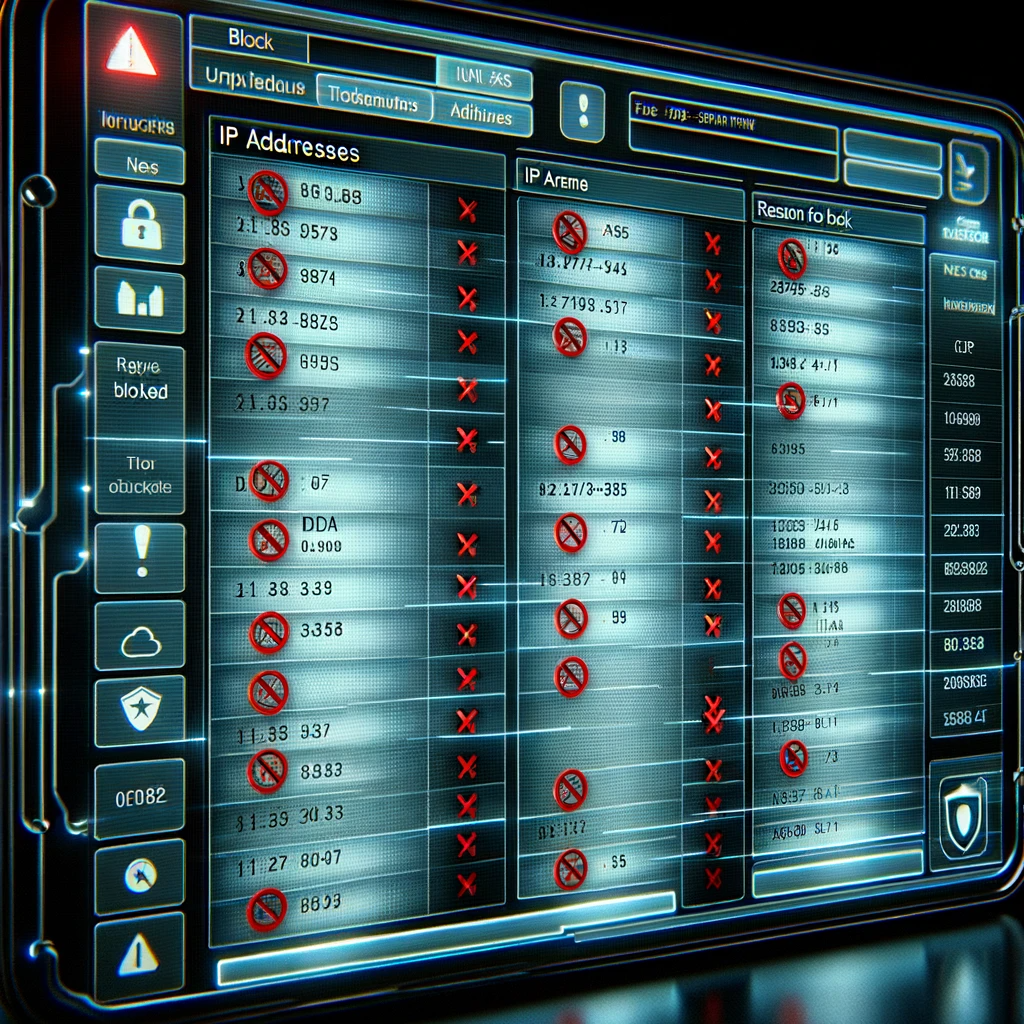Challenges and Opportunities of Cyber Deception
17 March 2023 | by Xavier Bellekens

In the ever-evolving world of cybersecurity, organizations are constantly seeking innovative strategies to defend against sophisticated cyber threats.
One emerging technology is cyber deception, a proactive approach that leverages decoys, traps, and false information to lure attackers away from valuable assets and gather valuable intelligence on their tactics.
As the interest in this cutting-edge technique grows, it’s crucial to understand the challenges and opportunities it presents.
In this comprehensive blog post, we’ll dive deep into the world of cyber deception, exploring its benefits, potential roadblocks, and how it can be successfully integrated into a robust cybersecurity strategy.
Join us as we navigate the complex landscape of cyber deception, shedding light on this promising yet often misunderstood approach to securing your infrastructure.
What is Cyber Deception?
As a quick recap, cyber deception is a strategy that proactively uses decoys, traps, and false information to mislead and divert attackers from accessing valuable assets.
By creating a deceptive environment, you can detect threats early, gather valuable contextual intelligence on attacker tactics, and reduce the risk of successful breaches.
This is proactive approach not only confuses adversaries but also provides security teams with invaluable insights into their tactics, techniques and procedures, enabling them to adapt and enhance their overall defense strategy.
Proactive vs Reactive
Deception is a proactive approach that actively engages and misleads attackers by deploying decoys, traps, and false information, rather than relying on reactive defenses like firewalls and antivirus software.
Traditional security methods often focus on detecting and blocking known threats, you can think of traditional security as building the walls of a castle and hoping nobody manages to jump over.
Deception on the other hand creates a dynamic environment that lures attackers into revealing their tactics and intentions. Imagine a castle with a faux entrance, having decoy ladders to jump over a fake walls, etc.
This significant shift from passive defense to active engagement allows you to gain valuable insights, strengthen your overall security posture, but most importantly turn the tables on adversaries.
Opportunities of Cyber Deception
Early Detection of threat
Early detection of threats by strategically deploying decoys, traps, and false information across an organization’s network works wonders.
The main idea is that these deceptive elements mimic legitimate systems and assets, enticing attackers to engage with them.
As adversaries interact with the deceptive environment, their activities are closely monitored, generating alerts that allow security teams to identify and respond to potential threats in their early stages.
This proactive approach to threat detection provides you with a valuable head start, enabling you to mitigate the risk of a successful breach and better understand the tactics and techniques employed by the attackers, if need be.
You can essentially use the technology for gathering TTPs or simply as a high fidelity alerting system.
Enhanced Threat Intelligence
By design, deception encourages interaction with attackers, offering a unique opportunity to gather contextual threat intelligence and threat hunt.
As adversaries engage with decoys and traps, security teams can collect real-time information on their tactics, techniques, and procedures, as well as uncovering indicators of compromise (IOCs).
This enhanced threat intelligence not only helps you understand the specifics of an ongoing attack, but also provides valuable insights into the broader threat landscape.
By analyzing this contextual data, security teams can better anticipate and prepare for future threats, enabling them to continually refine and adapt their cybersecurity strategies for improved defense or simply re-shape their budgets.
Check how deception helps identify adversaries and monitoring sectors.
Resource Allocation for Attackers AKA Wasting Time
Resource allocation for attackers, in the context of cyber deception, refers to the process of forcing adversaries to expend their time, effort, and resources on engaging with deceptive elements, such as decoys and traps, instead of targeting genuine assets. The benefits of this approach are twofold:
- Slowing down attackers: By compelling attackers to interact with deceptive elements, their progress is significantly slowed down. This delay provides security teams with additional time to detect, analyze, and respond to the threat, reducing the risk of a successful breach.
- Increasing the cost of attacks: As adversaries invest their resources in deciphering the deceptive environment, the overall cost of conducting an attack increases. This added burden can potentially deter some attackers from pursuing their objectives further, as the perceived benefits may no longer outweigh the costs.
By being strategic and implementing cyber deception techniques, you can effectively influence attackers’ resource allocation, making it more challenging and resource-intensive for adversaries to achieve their goals.
Deception in an Incident and Response Context
Deception offers notable benefits for incident response and attribution, enhancing an organization’s ability to effectively manage and mitigate cyber threats.
By using decoys and traps to identify attackers early in their intrusion attempts, security teams can quickly initiate incident response procedures, minimizing potential damage and reducing containment and remediation efforts.
The detailed intelligence gathered through cyber deception enables in-depth forensics, helping security teams understand the specifics of the attack and improve defenses against similar threats in the future.
Cyber deception also assists in identifying the origin and nature of an attack, including potential links to known threat actors or groups, which is valuable for law enforcement collaboration and industry efforts to track and prosecute cybercriminals.
By monitoring attackers’ interactions with deception elements, security teams can adapt their incident response strategies in real-time, countering evolving threats more effectively.
Moreover, the intelligence gathered through cyber deception can help organizations demonstrate due diligence in their cybersecurity efforts, ensuring compliance with legal and regulatory requirements and potentially reducing the risk of fines or legal actions.
Challenges of Implementing Cyber Deception
Deception is Complex
The complexity of cyber deception presents a significant challenge for organizations looking to adopt this innovative cybersecurity strategy.
Implementing deception techniques requires a deep understanding of an organization’s network architecture, assets, and potential attack vectors.
Security teams must carefully design and deploy decoys, traps, and false information that convincingly mimic real assets while avoiding interference with legitimate operations.
On top of this, maintaining and updating deceptive elements as the network environment evolves can be a resource-intensive task.
This level of complexity can be a barrier to entry for organizations with limited cybersecurity expertise or resources, making it difficult for them to effectively leverage deception-based strategies.
Additionally, the need to analyze and respond to the wealth of data generated by deceptive elements can place additional demands on already stretched security teams, potentially detracting from other critical security tasks.
How does Lupovis address this challenge?
We address the complexity of deception by offering a streamlined, easy-to-use deception as a service solution that enables organizations to deploy deception assets at scale in just 10 minutes.
With minimal effort required from security teams, we simplify the process of implementing and maintaining cyber deception strategies, making it the ideal “deploy and forget” solution.
We also eliminate the barriers of complexity and resource-intensiveness, making it the ideal solution whether you are an SME, a SOC, an MSSP or a Fortune 500 company.
10 minutes to spare? Come have a chat.
Integration Challenges
Integration challenges are a key concern when implementing cyber deception within an organization’s existing cybersecurity infrastructure. These challenges include:
- Compatibility: Cyber deception solutions may not be compatible with all existing security tools and systems, leading to potential gaps or conflicts in the organization’s security posture.
- Interoperability: Ensuring seamless communication between cyber deception platforms and other security tools, such as SIEM (Security Information and Event Management) and SOAR (Security Orchestration Automation & Response) systems, is crucial for effective threat detection and response. Integration difficulties can result in delayed or missed alerts, hindering the overall efficacy of the organization’s cybersecurity strategy.
- Complexity: The integration of cyber deception solutions into existing security infrastructure can be complex, requiring specialized knowledge and expertise. This can be a barrier for organizations that lack the necessary resources or technical know-how to undertake such an endeavor.
- Maintenance: As the organization’s network environment evolves and new security tools are introduced, maintaining the integration of cyber deception solutions can become a resource-intensive task, demanding continuous updates and adjustments to ensure optimal performance.
- Risk of misconfiguration: Inaccurate or incomplete integration of cyber deception tools with existing security systems can lead to misconfigurations, potentially exposing the organization to additional vulnerabilities or reducing the effectiveness of deception strategies.
To overcome these integration challenges, organizations should carefully assess their existing cybersecurity infrastructure, seek expert guidance, and choose cyber deception solutions that are designed with compatibility and interoperability in mind.
How does Lupovis address this challenge?
Lupovis tackles integration challenges by utilizing big data to ensure compatibility with a wide range of systems and to deceive adversaries.
With built-in support for all major SIEMs and SOARs, we eliminate the need for manual intervention and streamlines interoperability, making the integration process seamless and hassle-free. Also, our quick, 10-minute deployment time significantly reduces the friction and complexity typically associated with integrating cyber deception solutions into existing security infrastructure.
Furthermore, at Lupovis we provide a single interface for maintenance, simplifying deployment and management of deception assets while actively monitoring for misconfigurations and notifying users of any issues.
By addressing these integration challenges, we empower organizations to adopt cyber deception techniques with ease.
False Positives
Skepticism and false positives are concerns that can hinder the adoption of cyber deception as a mainstream cybersecurity strategy.
Skepticism often stems from the perception that deception techniques might not be as effective as traditional security measures or that they could inadvertently create new vulnerabilities.
Additionally, there is a concern that cyber deception might generate false positives, resulting in security teams spending valuable time and resources chasing after non-existent threats.
These false positives can not only strain already stretched security resources, but also diminish trust in the effectiveness of deception techniques.
However, the skepticism surrounding cyber deception and its potential for false positives is interesting, given that SOCs are already grappling with high false positive rates from traditional cybersecurity solutions.
How does Lupovis address this challenge?
Lupovis is the culmination of a decade of dedicated research focused on eliminating false positives in cyber deception, making it an invaluable addition to any SOC’s arsenal.
By leveraging the insights gained from years of study, we deliver a highly accurate and silent deception solution that significantly reduces false positive rates.
As a result, security teams can confidently rely on the intelligence gathered by our service, enabling them to prioritize and respond to genuine threats effectively.
This precision and efficiency make Lupovis an essential tool for organizations seeking to bolster their cybersecurity defenses and streamline their incident response processes.
Also, did we tell you that we can put decoys outside your network without increasing the false positive rate?
Want to check it out? Give us a quick shout.
Conclusion
In conclusion, cyber deception presents both challenges and opportunities for organizations seeking to enhance their cybersecurity posture.
By proactively engaging attackers and gathering valuable threat intelligence, cyber deception can significantly improve early threat detection and incident response capabilities.
Lupovis address the complexity and integration challenges associated with deception techniques heads on, by offering a streamlined and efficient approach that minimizes false positives.
17 March 2023 | by Xavier Bellekens
Speak to an Expert
Whether you have a specific security issue or are looking for more information on our Deception as a Service platform, simply request a call back with one of our security experts, at a time that suits you.


